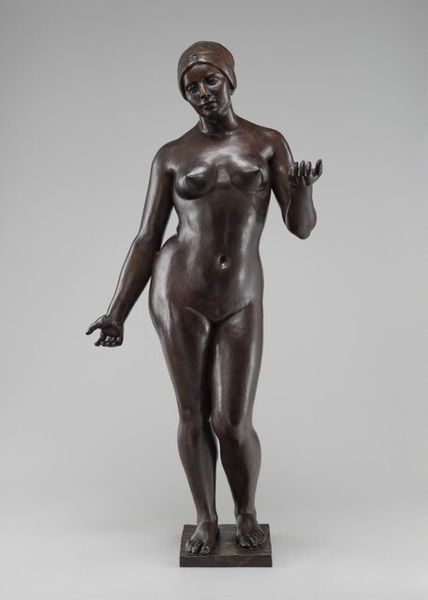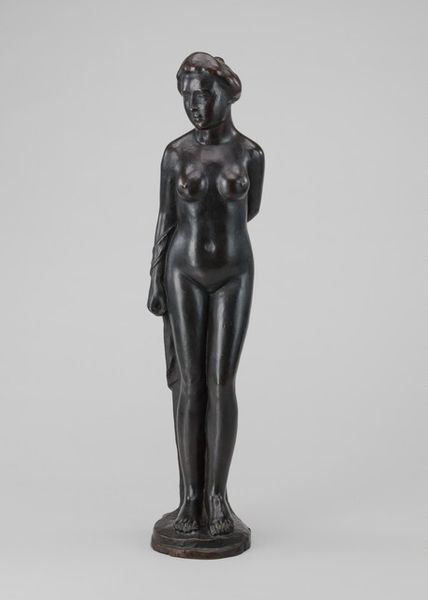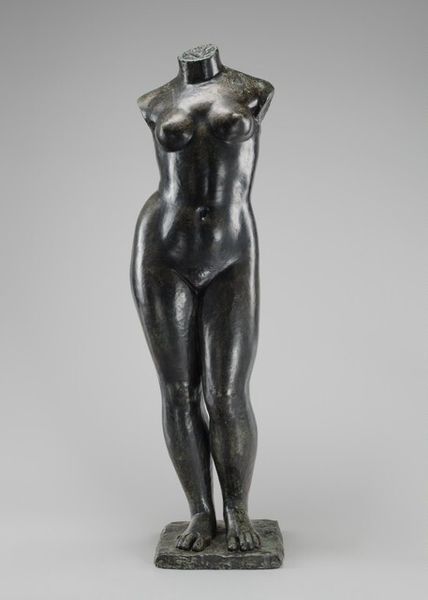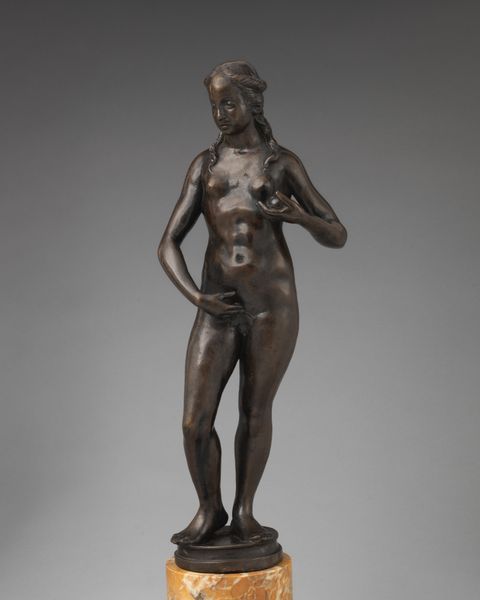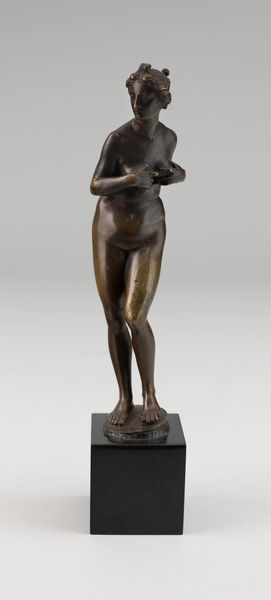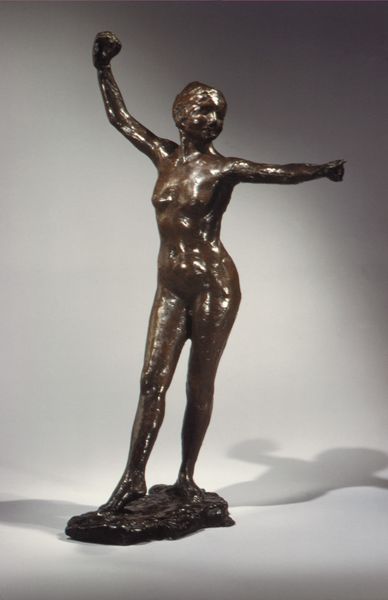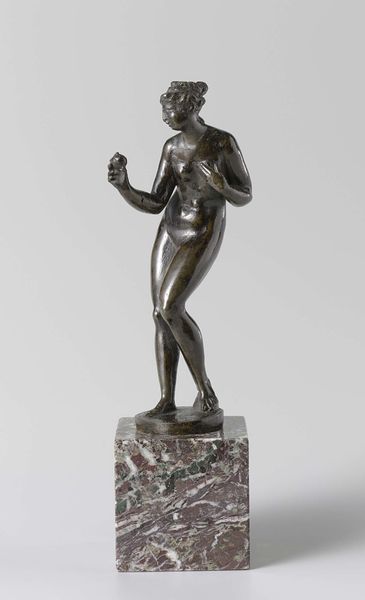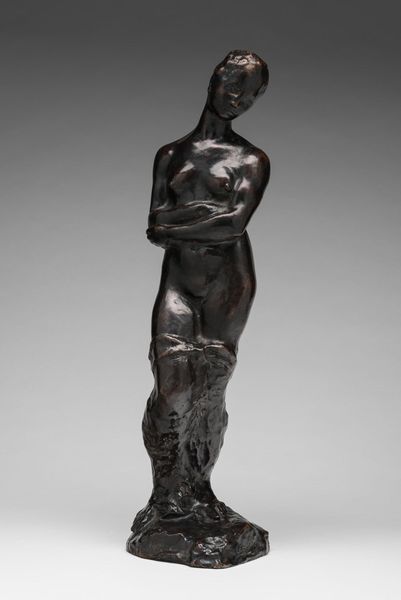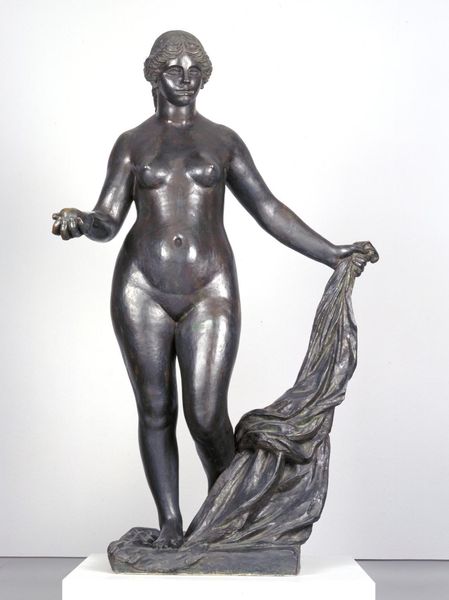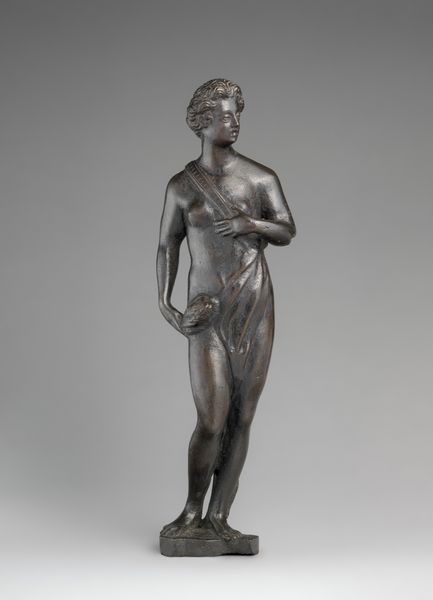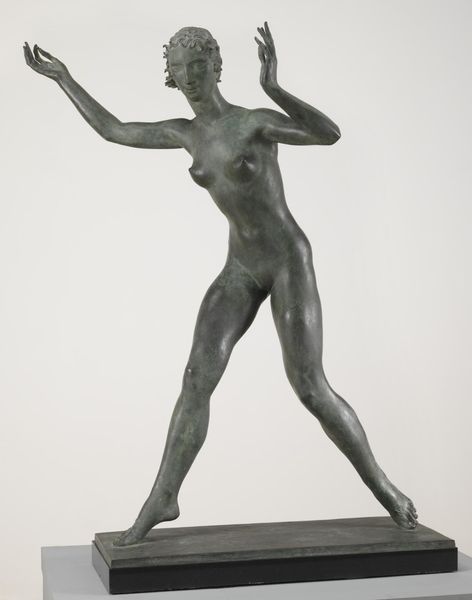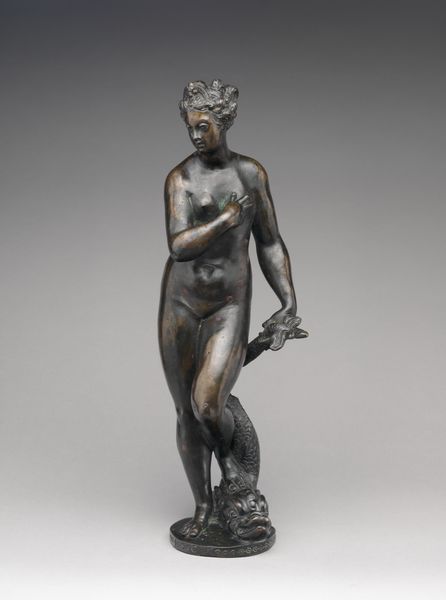
bronze, sculpture
#
portrait
#
statue
#
sculpture
#
classical-realism
#
bronze
#
figuration
#
sculpture
#
history-painting
#
nude
#
modernism
#
realism
#
statue
Dimensions: overall: 175.5 x 60.2 x 42.3 cm (69 1/8 x 23 11/16 x 16 5/8 in.)
Copyright: National Gallery of Art: CC0 1.0
Editor: Here we have Aristide Maillol’s bronze sculpture, “Venus,” created between 1918 and 1928. She seems remarkably grounded and solid, almost…earthy. What stands out to you about this piece? Curator: The most striking thing is Maillol’s deliberate use of bronze itself. Its inherent properties - weight, texture, the way it catches light - they all speak to a specific ideology about the female form. Forget airy idealizations; this is about labor, about grounding the feminine in the tangible world. Notice the marks of the sculptor’s tools; he’s not hiding the making process. Editor: So, it's not just about *representing* Venus, but about the active *making* of her? Curator: Precisely! Consider the social context. Early 20th century – industrialization is booming. Maillol is challenging those classic ideals by reminding us of the labor involved in art. Bronze isn't some ethereal substance. It's mined, smelted, shaped… What does it mean to create a Venus with the materials and the aesthetic associated with labor? How is he playing with our understanding of both art and women? Editor: It's like he’s bringing Venus down to earth, in more ways than one. I hadn’t considered the link to industrialization. It makes me wonder how women in factories would respond to a Venus sculpted in that era with industrial materials. Curator: Exactly. These tensions of material, form and socio-economic factors are key. How consumption shapes our views of classical narratives. It is no accident. And there is the mark of human intervention everywhere, from the sculptor's hand to your own engagement with it. It brings you as the spectator into a production process and relationship. Editor: This really shifts how I view not only the statue itself, but also Maillol’s intentions. Thanks for offering that point of view. Curator: Of course! Exploring the materiality of art often reveals deeper social and political layers.
Comments
No comments
Be the first to comment and join the conversation on the ultimate creative platform.
